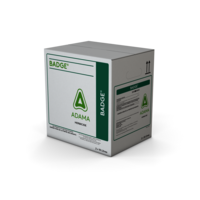
Cover Your Bases When Considering Cover Crops

Cover crops and regenerative ag practices are getting a lot of attention these days, but it is important to also consider the limitations any cover crop may put on herbicide options to realize the maximum benefit. For example, Red Clover is an excellent cover crop and one of the most popular, but its presence does limit herbicide options.
Fortunately, BADGE® herbicide (bromoxynil + MCPA ester) is registered for wheat under seeded with red clover and provides effective control of a wide range of broadleaf weeds, including winter annual brassica species (i.e. Stinkweed and Shepherd’s purse).
For best results, from the perspective of the clover, target applications when the red clover is in the 1st to 3rd trifoliate stage, and ideally the wheat canopy should be large enough to provide some additional protection to the clover seedlings. Applications should not be made if the clover seedlings are under severe stress (i.e., drought).
For the wheat crop, BADGE® is known as a gentle product. However, applications should be avoided if temperatures are above 25⁰C. Spraying should also be avoided if conditions are forecasted to be excessively cool; i.e. the “rule of 3s” – don’t spray if the temperature is to be below 3⁰C the day before application, the day of application, or the day after application. These precautions are recommended, as while cereals metabolize the active ingredients within BADGE, temperature extremes can interfere with the process.
For more information on BADGE® please click here.

